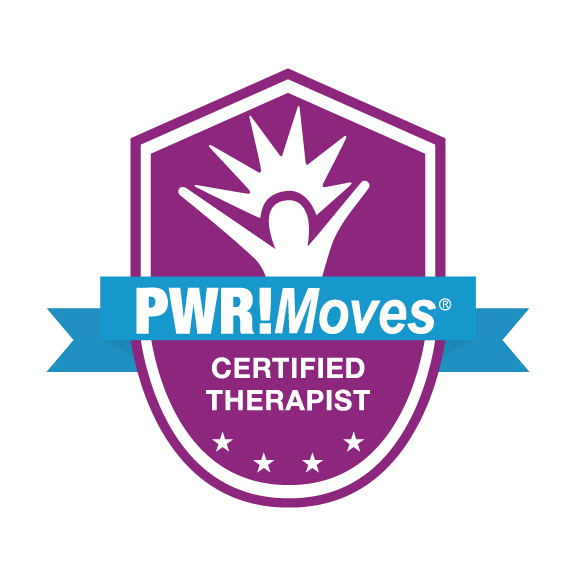Parkinson’s Disease
Physical Therapy Can Help with Parkinson’s Disease!
Physical therapists can be helpful at all stages of Parkinson’s Disease. Movement impairments in the initial stages of the disease are not always obvious. By not engaging a physical therapist with a neurological specialization as part of their medical team, people with Parkinson’s often miss the window of opportunity to address these impairments early. Talk to your doctor about getting a baseline physical therapy evaluation and then continue with periodic re-evaluations. According to the Parkinson’s Outcomes Project, the largest clinical study of Parkinson’s disease is through our Centers of Excellence network.
What is PWR! and How Can It Help with Parkinson’s Disease?
PWR! and PWR!Moves are program that are specific to Parkinson’s Disease and functional exercise that physical therapists use to increase mobility and function. Our team will work to progressively work with you physically and cognitively to target your unique symptoms. Everyone is an individual and our therapists know this!
help you mitigate symptoms and rebuild functionality, no matter how you incorporate them into your life. They’re beneficial in stand-alone group exercise classes, integrated into your daily activities and routines (such as activities of daily living, recreation, sports, and hobbies), in physical and exercise therapy settings.
Schedule Now!
Ready to Get Started? Schedule Your Appointment Today
Contact our physical therapy team in either of our convenient locations in Fremont and Los Gatos to schedule your appointment!
Learn More About Parkinson’s Disease
Parkinson’s disease is a neurodegenerative disorder of the central nervous system (brain and spinal cord) that destroys cells in the part of the brain that controls movement. One of the hallmarks of the disease is that the dopamine in the brain’s motor system progressively stops working. The disease is not easily curable. It is often associated with early-onset Parkinson’s, which is the most common type of Parkinson’s, affecting around 60% of people with the disease. When people are diagnosed at a younger age, the disease tends to progress more rapidly. Parkinson’s disease affects people of all ages and ethnic backgrounds. Parkinson’s is the second most common neurodegenerative disease in the world. One in every 500 people are estimated to have Parkinson’s.
What are the symptoms of Parkinson’s Disease?
More than 80 percent of people with Parkinson’s have symptoms that can be described as muscle stiffness and/or tremors. Most cases start with stiffness (tremors), or lack of mobility. If you have symptoms of Parkinson’s, ask your doctor if you need a referral for a physical therapist. What are the symptoms of PD? Most people with Parkinson’s experience muscle stiffness (tremors) and have difficulty getting up from a sitting position, walking, and getting up from a bed. How does it affect day-to-day life? Frequently, people with PD have trouble walking and walking with a steady gait. They may also have difficulty keeping their balance and unstable posture.

What are the treatments for Parkinson’s?
Physical therapy and the PWR! Program have been shown to help improve quality of life. Physical therapists help patients work on mobility, activities of daily living, and overall well-being. The objective is to increase strength, endurance, and stability and to improve quality of life. Parkinson’s patients benefit from spinal-cord manipulation, including manual, electrical, and robotic spinal manipulation. Physical therapists often use light-weight maneuverability devices, such as hand walkers and seated wheelchairs to help people with Parkinson’s ambulate, maintain balance, and decrease pain and stiffness. Partnering with a physical therapist has also been found to decrease surgical intervention in Parkinson’s patients.

Is it time for physical therapy?
What’s important to do before therapy? The Parkinson’s Outcomes Project found that: Harms were less than 0.2 percent of respondents Overall, 9 percent reported an improvement in their life satisfaction More than 9 percent reported an improvement in their overall functioning More than 2 percent reported an improvement in their quality of life More than 6 percent reported an improvement in motor function, slow movement, gait, balance or falling More than 1 percent reported an improvement in depression What to do before therapy You should get a diagnosis and learn the signs and symptoms of PD. Early diagnosis and intervention are important for the overall health and quality of life of a person with Parkinson’s.
Why it’s important to be evaluated by a physical therapist early on in the disease
When a physical therapist sees you for the first time and does not have previous contact with you, there are many adjustments and adaptations that they may need to make to assist with your movement, balance, posture, strength and flexibility. A quick physical evaluation at this stage in the disease can identify these issues and guide your team to make appropriate changes. If a physical therapist sees you and your symptoms and movement seem to be getting worse or if there are sudden changes to your Parkinson’s symptoms or even changes over the span of a few weeks or months, then it may be time to evaluate you for treatment, especially if there are any factors, such as a medication change, that could be contributing to these changes.
Contact our physical therapy clinics in Fremont and Los Gatos to schedule your appointment!
How would a physical therapy evaluation help with Parkinson’s?
Physical therapists assess motor and cognitive function to identify concerns and optimize management strategies. Physical therapists diagnose and treat conditions that affect movement, including those related to the autonomic nervous system. Physical therapists teach the person with Parkinson’s and their care team new exercises that can help with physical therapy goals and help prevent falls. Physical therapists assess a person’s condition, assess functional capabilities, and develop a personalized, step-by-step plan to help the person regain and maintain independence. Physical therapists develop multidisciplinary treatments for individuals with Parkinson’s disease. How do I tell if it’s time to get a referral?
Physical therapy can be an important part of the overall treatment plan for Parkinson’s disease. It can improve quality of life with bigger steps, more mobility, better balance and less freezing.
Contact our physical therapy clinics in Fremont and Los Gatos to schedule your appointment! .



